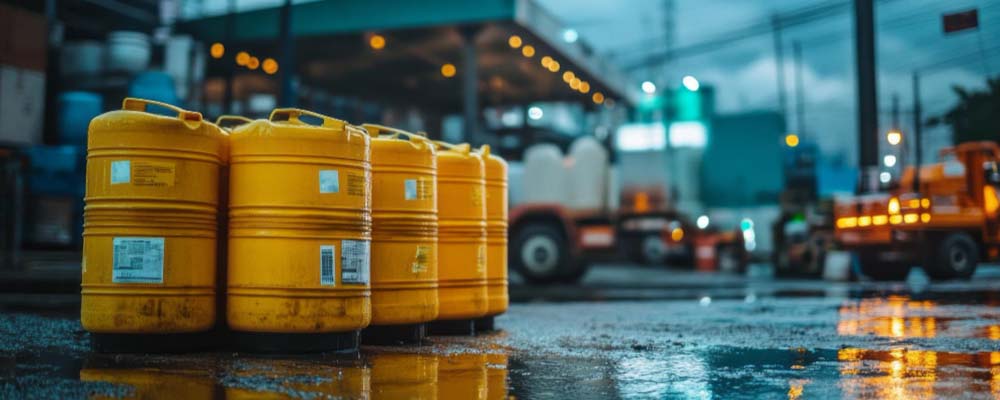
Peru, one of Latin America’s most dynamic economies, stands out for its rich natural resources and growing industrial sectors. While it is globally recognized for its mineral exports such as copper and gold, the country also relies heavily on imports to sustain its energy needs. Among the leading categories of imported goods, mineral fuels are of paramount importance. As of 2024, mineral fuels, including crude petroleum, refined oil, natural gas, and coal, represent a significant percentage of Peru’s total imports. This blog post will explore the role of mineral fuels in Peru’s economy, factors driving demand, and essential insights for logistics providers, freight forwarders, and industry stakeholders.
Overview of Peru’s Import Landscape
To understand Peru’s reliance on mineral fuels, it is crucial to examine the broader import environment. Peru’s import market has been expanding steadily, with its economy maintaining moderate growth rates over the last decade. According to data from the Observatory of Economic Complexity (OEC), in 2022, mineral fuels, including refined petroleum, accounted for 18.4% of Peru’s total imports. This underscores the country’s dependence on energy products to meet domestic consumption and fuel its industrial sectors.
Peru’s main import partners for these products include China and the United States, but other players such as Brazil, Argentina, and Mexico also contribute significantly. The demand for mineral fuels is not limited to the energy sector but permeates across various industries including manufacturing, transportation, and agriculture.
What Are Mineral Fuels and Why Are They Important?
Mineral fuels are substances extracted from the earth that can be burned or processed to produce energy. The most common types of mineral fuels are crude oil, refined petroleum products, natural gas, and coal. These products play an essential role in powering industries, heating homes, and fueling vehicles. For Peru, which relies heavily on fossil fuels for energy generation and transportation, importing these products is necessary to meet growing domestic demands.
Key mineral fuels imported by Peru include:

- Crude petroleum: used for refining into gasoline, diesel, and other petroleum products.
- Refined petroleum: encompasses gasoline, diesel, jet fuel, and other distillates used in industrial and transportation sectors.
- Natural gas: often imported to supplement local production, used for power generation and in residential heating.
- Coal: primarily utilized in industrial processes, such as cement production and metal manufacturing.
Factors Driving Peru’s Demand for Mineral Fuels
a. Economic Growth
One of the primary drivers of Peru’s increasing mineral fuel imports is its economic growth. Peru’s growing industrial base demands more energy for manufacturing and mining. As urbanization rises, fuel needs for transportation and housing also increase. Logistics providers must prepare for higher fuel shipments to support this economic growth.
b. Limited Domestic Production
While Peru has domestic reserves of natural gas and produces a significant portion of its energy through hydroelectric power, it does not produce enough fossil fuels to meet its total energy requirements. This gap necessitates substantial imports of crude oil and refined petroleum. Peru imports much of its petroleum from global markets to power its refineries and meet the demands of the transportation, agricultural, and industrial sectors. This presents opportunities for logistics providers and customs brokers to optimize the supply chain of these vital energy products.
c. Infrastructure and Industrialization
Peru’s ongoing infrastructure projects—such as road, bridge, and port construction—require considerable amounts of fuel to power machinery and transportation fleets. As the country works to upgrade its national infrastructure, this contributes to a rising need for mineral fuels. Furthermore, industrialization, especially in manufacturing, mining, and agriculture, relies on a constant and stable energy supply. Manufacturers, producers, and e-commerce businesses depending on large-scale logistics should remain aware of these energy demands as they impact operational efficiency.
Key Challenges Facing Peru’s Mineral Fuel Imports
a. Price Volatility
The global mineral fuel market is highly volatile, with prices fluctuating due to geopolitical events, supply-demand changes, and policies. Tensions, embargoes, and OPEC decisions often cause price spikes or drops, impacting Peru’s import costs. Importers and customs brokers must closely monitor these trends to manage financial risks.
 b. Transportation and Logistics Costs
b. Transportation and Logistics Costs
The process of importing mineral fuels is both capital- and resource-intensive. Transporting crude oil, refined petroleum, and other fuels requires specialized logistics infrastructure. Freight forwarders and logistics providers must account for the costs of handling, storing, and distributing volatile mineral fuels. Additionally, bottlenecks from port congestion, infrastructure limits, or customs delays can further increase logistics costs.
c. Environmental Concerns
The environmental impact of relying heavily on fossil fuels is a growing concern globally, and Peru is no exception. As climate policies tighten, Peru may introduce stricter carbon regulations, impacting fuel import policies. This could increase compliance requirements, raise operational costs, and drive investments in cleaner technologies or alternative fuels for logistics vendors and importers.
Opportunities for Stakeholders in the Supply Chain
Despite challenges, importing mineral fuels offers opportunities, particularly for logistics, freight forwarding, and customs brokerage. Providers can meet growing demand by offering tailored fuel transport solutions, especially those experienced in hazardous materials logistics.
Customs brokers can simplify fuel imports by staying current on trade regulations, reducing port delays, and ensuring timely deliveries. Manufacturers and e-commerce businesses can use fuel data to plan energy costs and partner with logistics vendors to mitigate price fluctuations and optimize supply chains.
Best Practices for Navigating Peru’s Fuel Import Market
a. Diversifying Suppliers
Given the volatility of global fuel markets, it is prudent for Peruvian importers and logistics providers to diversify their fuel suppliers. Relying on a single country or region for petroleum products can expose businesses to supply chain disruptions, price spikes, and geopolitical risks. Diversification across different suppliers and trade routes ensures that companies can maintain a steady supply of fuel even if unforeseen circumstances affect one market.
b. Leveraging Technology in Supply Chain Management
Utilizing advanced logistics management systems can help businesses monitor fuel imports in real time, optimize transport routes, and minimize costs. These technologies can provide valuable insights into fuel usage patterns, helping companies forecast demand more accurately and manage inventories efficiently. Technologies such as Internet of Things (IoT) devices and artificial intelligence (AI) can enhance predictive maintenance for vehicles, further reducing operational costs related to fuel consumption.
c. Focusing on Sustainability
As the world moves toward greener energy solutions, Peru will eventually transition toward renewable energy sources, though fossil fuels will remain essential in the medium term. Logistics providers, importers, and manufacturers involved in the mineral fuel trade can start preparing for this shift by exploring alternative energy sources, such as biofuels or solar power. By investing in sustainability initiatives, companies can reduce their carbon footprint while staying compliant with future environmental regulations.
 Conclusion
Conclusion
Peru’s reliance on mineral fuel imports will persist due to economic growth and the need for stable energy supplies. This presents strong opportunities for logistics providers and customs brokers, though businesses must stay alert to market trends, price fluctuations, and regulations. By diversifying suppliers, embracing technology, and focusing on sustainability, industry players can navigate challenges and seize opportunities in Peru’s fuel market, ensuring continued economic growth and energy security.
Contact us today to streamline your logistics and fuel import needs. Let us ensure that your business stays powered and efficient in Peru’s dynamic economy.




 b. Transportation and Logistics Costs
b. Transportation and Logistics Costs Conclusion
Conclusion



